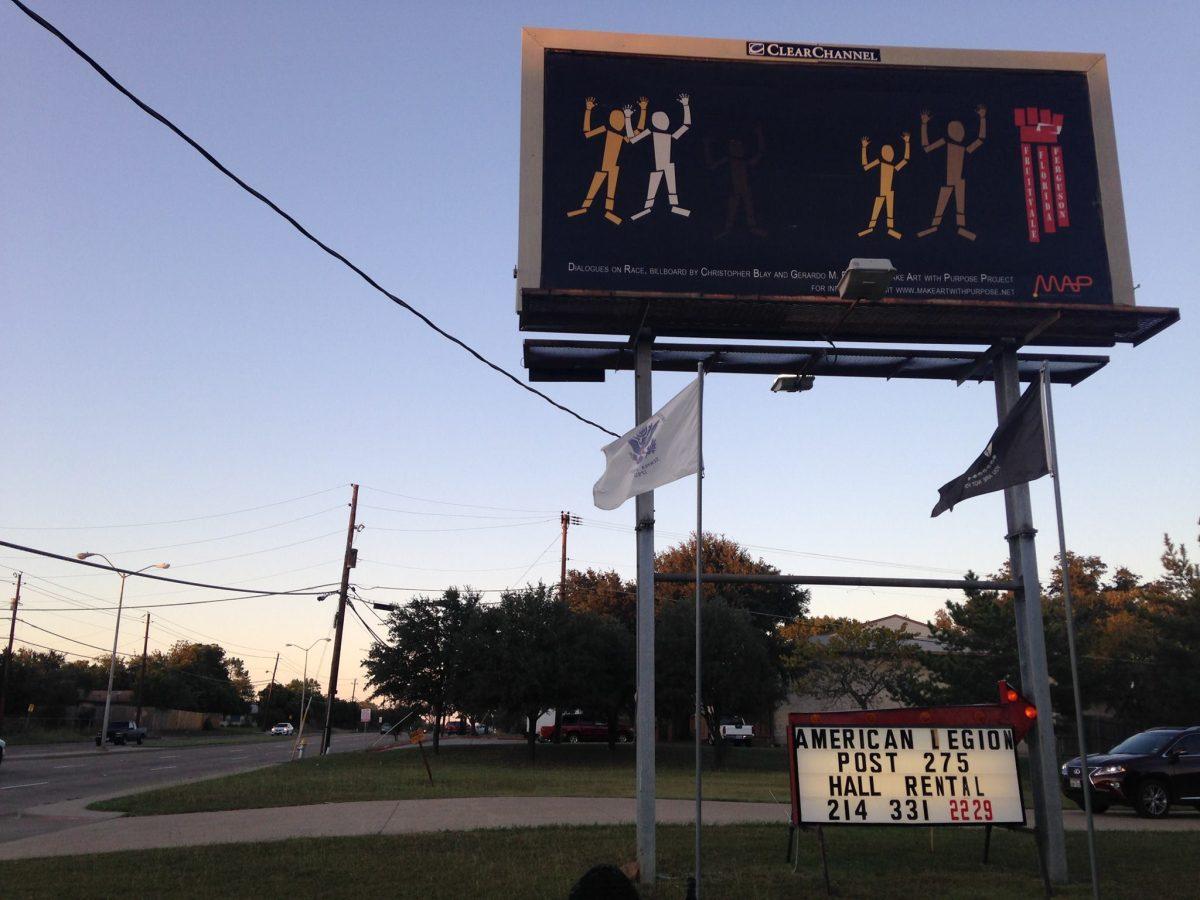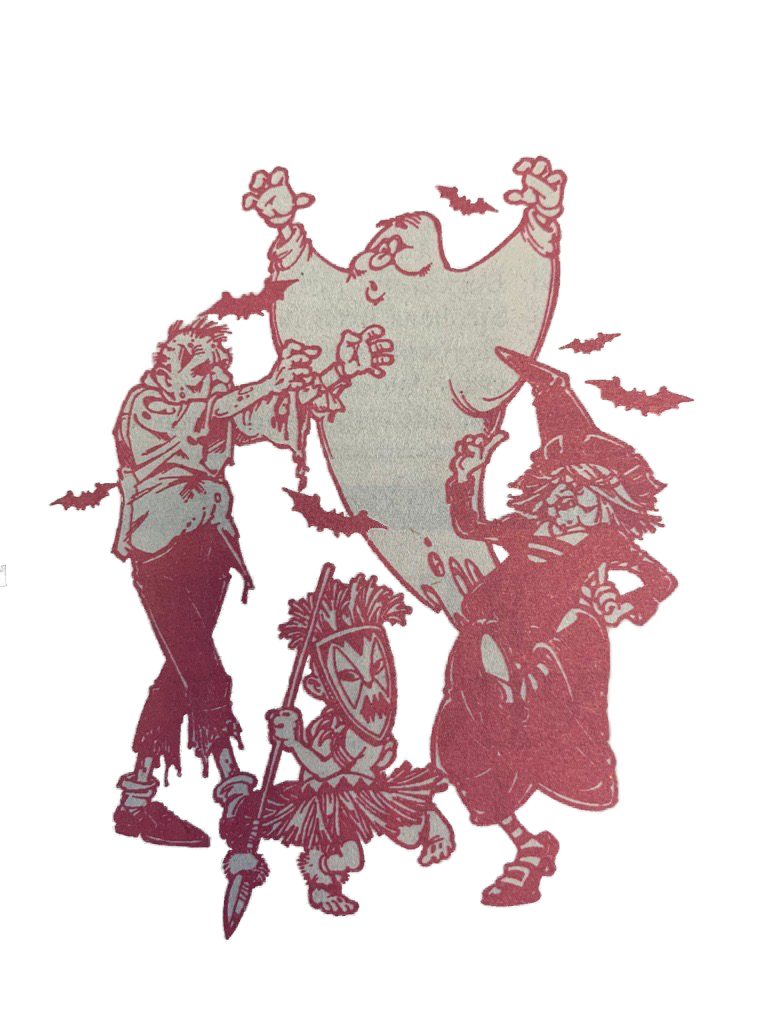Dallas-based art organization collaborates with artists to create signboard projects with a focus on activism, positive change
A billboard-based art initiative about racial equity is going to the national stage with the help of CentralTrak artists.
Titled “Dialogues on Race,” the project is directed by Make Art with Purpose (MAP), a Dallas-based organization that collaborates with artists to create projects that positively affect communities all over the world.
Janeil Engelstad, the founder of MAP, partnered with New York design firm World Studio to help spread the project.
Engelstad said the idea behind addressing current racial strife stems from the fact that since the Civil Rights era, interest in movements for racial equity has slowly declined.
“’Dialogues on Race’ is part of a new movement in the United States because really we all thought that things had changed with legislation like the Voting Rights Act,” Engelstad said. “I think people kind of laid down their activism and now we see we can’t do that.”
’Dialogues on Race’ is part of a new movement in the United States…
The initiative includes four billboards, two local school murals and a community conversation at UTD’s CentralTrak artist residency. Engelstad selected the artists based on their unique cultural heritage and artistic emphasis on social issues.
The four billboards are located throughout the city. Two artists worked on each billboard.
CentralTrak resident artist Chris Blay worked with local artist Gerardo Robles on one billboard. Its black background features five amber, peach, dark brown, and olive brown angular, segmented stick figures.
The figures have their hands raised in the familiar “Hands up, don’t shoot” pose popularized by protestors of Michael Brown’s shooting in Ferguson, MO. To one side of the canvas is a stylized red fist supported by the words “Fruitvale, Florida, Ferguson” in reference to the shootings of Oscar Grant in California, Michael Brown in Missouri and Trayvon Martin in Florida.
Artists Jin-ya Huang and Thania Dominguez McElroy created another billboard inspired by Michelangelo’s Sistine-Chapel fresco “The Creation of Adam.”
On the board two arms are outstretched, one black and one white and heavily tattooed; their hands almost touch. The white hand holds a human heart. Captioned above the picture is the statement “We’re all the same color at heart,” in reference to the fact that race is not an issue during organ donation.
We’re all the same color at heart.
Artists Rebecca Carter and Daryll Ratcliff made a billboard that emphasized the human genome. Behind the phrase “We are all Black,” a grey-cast, magnified picture of genes curves on the dark façade.
Engelstad partnered with Moreshin Allahyari to create an online, electric billboard. It features a search box with the static question “Are people from the Middle East?” and common completed search options “Different Colors,” “All in war” and “All Muslim.”
Engelstad said she chose billboards as a medium because of their ready accessibility to every member of a community. Even those without access to common electronics like computers, televisions and cell phones can easily view a billboard.
The large size of billboards is another useful feature, Engelstad said. It not only makes artwork highly visible, but also creates media buzz. Subsequent reports and interviews about the billboards prompt community discussions about race issues.
“[Billboards] get media attention and that’s really important because so much of what we do as society is impacted and shaped by the media,” Engelstad said. “So if we can, as artists and activists, take hold of that media and start to shape the conversation, then we are starting to contribute to the conversation.”
The scale and visual interest provided by the billboards make them into conversation pieces that create a prime environment for what Engelstad calls “the next step,” or sit-down community dialogues.
CentralTrak hosted a community discussion for “Dialogues on Race,” on Jan. 22.
From this discussion, Engelstad said many of the individuals who attended gained new insight into the experiences of others in their community.
“The biggest response I heard was, ‘Wow, I never knew,’ Engelstad said. “The fact that education is happening increases the possibility of knowledge and understanding and makes for more possibility in terms of social justice and racial equity.
Engelstad’s work in Dallas serves as inspiration for the movement of “Dialogues on Race” to new cities throughout the United States.
Rather than personally choosing the cities for future billboards, Engelstad finds great importance in the grassroot aspect of community involvement. As such, interest from artists in other cities will propel the project.
There is already interest for billboards in different cities. Artists in St. Louis have contacted Engelstad, and New York City is a clear choice for “Dialogues on Race” because of MAP’s partnership with World Studio.
Engelstad hopes that these conversations will lead to greater empathy between community members and stronger efforts to actively mend relationships within the community.
“The billboard is the activator of the conversation,” Engelstad said. “Hopefully from that there is increased understanding and increased willpower.”










